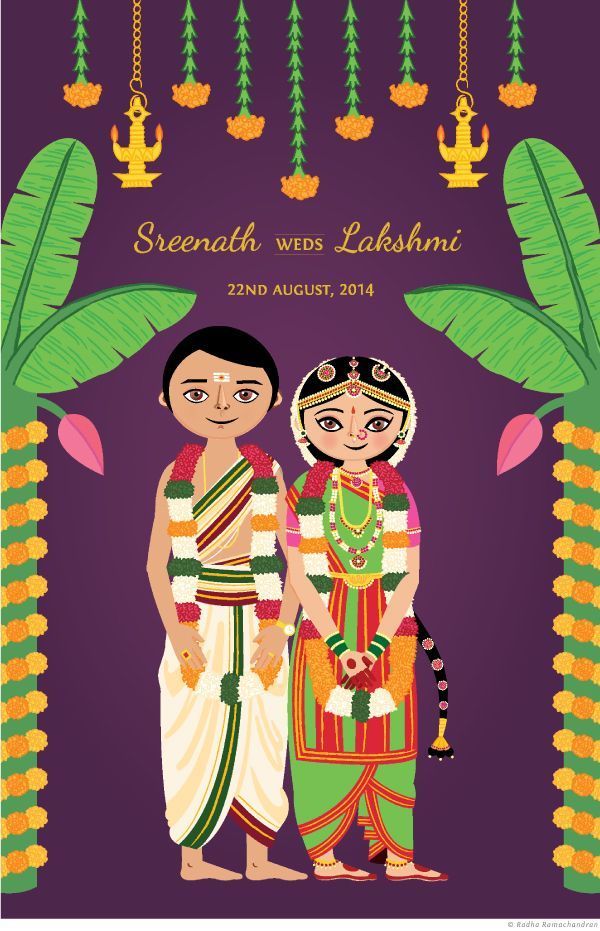Simple South Indian Wedding Invitation Wordings For Friends
If you are looking for South Indian wedding invitation wording for friends, you’re just at the right place. Find out what makes these wedding invitations so special, now!
Invitations mark the beginning of your wedding preparations and it’s one of the first things you want to tick off your to-do list. If you are a South Indian bride and your wedding is just around the corner, well, fret not, we’re here to help you out. From South Indian wedding invitation wording for friends to different elements of South Indian wedding invitations – you can find all the information right here, right now to finalize your cards. Check it out.

Conventional Elements In South Indian Wedding Cards
If you’re worried about South Indian wedding invitation wording for friends, we’ve chalked down the conventional elements of these cards, especially for you. Take note and don’t forget to include these elements in your invitations.
If you’re worried about South Indian wedding invitation wording for friends, we’ve chalked down the conventional elements of these cards, especially for you. Take note and don’t forget to include these elements in your invitations.
1. Educational Qualification
A lot of South Indians, particularly Tamils and Tamil Brahmins, or people who hail from Tamil Nadu give significant value to the educational qualifications of the bride, as well as the groom. Vigya from Carded Love told us that, “Once, we had to do an invitation card where the bride and the groom were doctors. The family had specifically asked us to mention their entire qualifications and colleges they both graduated from.” So yeah, yours, as well as your groom’s educational qualifications, can be a part of the South Indian wedding invitation
A lot of South Indians, particularly Tamils and Tamil Brahmins, or people who hail from Tamil Nadu give significant value to the educational qualifications of the bride, as well as the groom. Vigya from Carded Love told us that, “Once, we had to do an invitation card where the bride and the groom were doctors. The family had specifically asked us to mention their entire qualifications and colleges they both graduated from.” So yeah, yours, as well as your groom’s educational qualifications, can be a part of the South Indian wedding invitation
2. Two Versions Of Cards
Most South Indian families opt for two versions of the cards. One is done in English and the other one is done in their native language. “While the card in their native language is traditional and usually low on cost, the other one is more modern. It includes florals prints, contemporary designs, and watercolors, etc. The traditional cards are for relatives, whereas, the moderns ones are usually reserved for friends, family friends, and the younger crowd,” said Vigya. And so the English one can have funky South Indian wedding invitation wording for friends.
Most South Indian families opt for two versions of the cards. One is done in English and the other one is done in their native language. “While the card in their native language is traditional and usually low on cost, the other one is more modern. It includes florals prints, contemporary designs, and watercolors, etc. The traditional cards are for relatives, whereas, the moderns ones are usually reserved for friends, family friends, and the younger crowd,” said Vigya. And so the English one can have funky South Indian wedding invitation wording for friends.
3. Ancestor’s Village
If there’s one thing you can’t forget to include in your South Indian wedding invitation wordings is mentioning your ancestor’s village. Every card, whether it’s in the native language or not, will include a sequence where right below bride and groom’s names will be their grandparents’ names as well as the entire ancestor’s village location.
If there’s one thing you can’t forget to include in your South Indian wedding invitation wordings is mentioning your ancestor’s village. Every card, whether it’s in the native language or not, will include a sequence where right below bride and groom’s names will be their grandparents’ names as well as the entire ancestor’s village location.
Source : South Indian Wedding Cards

0 comments